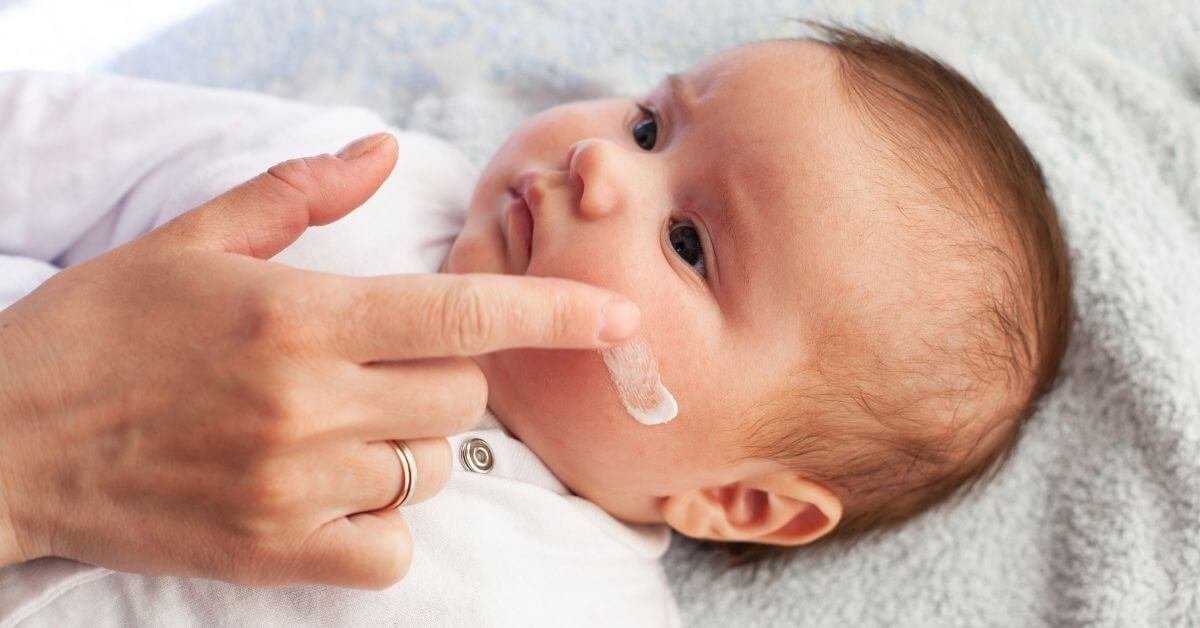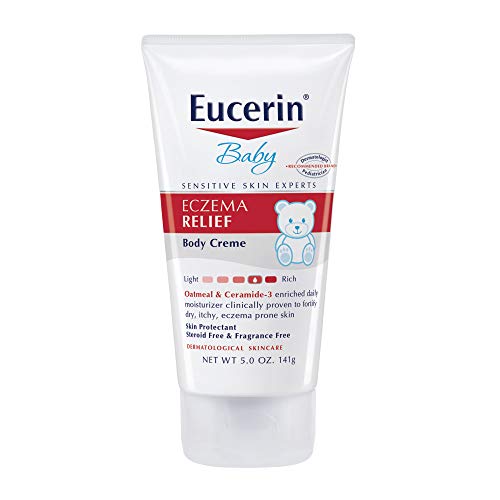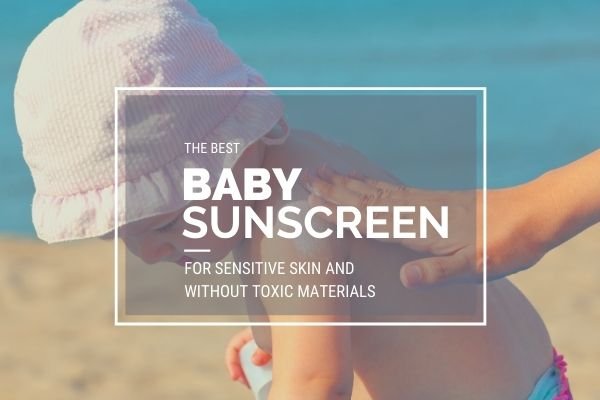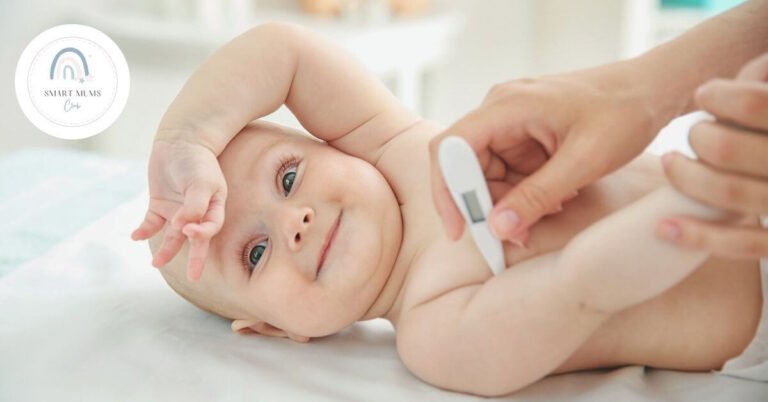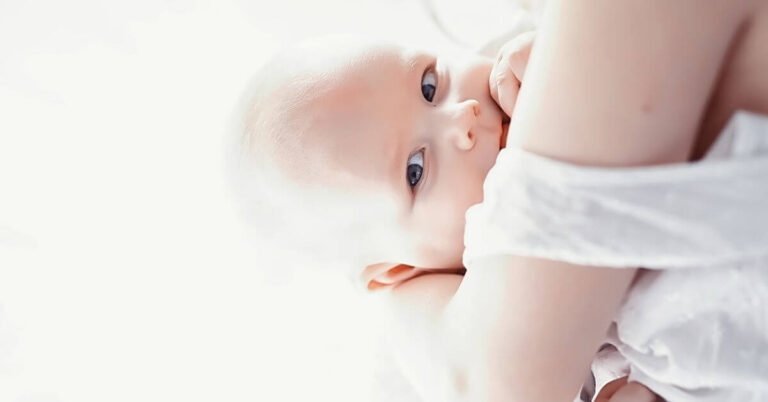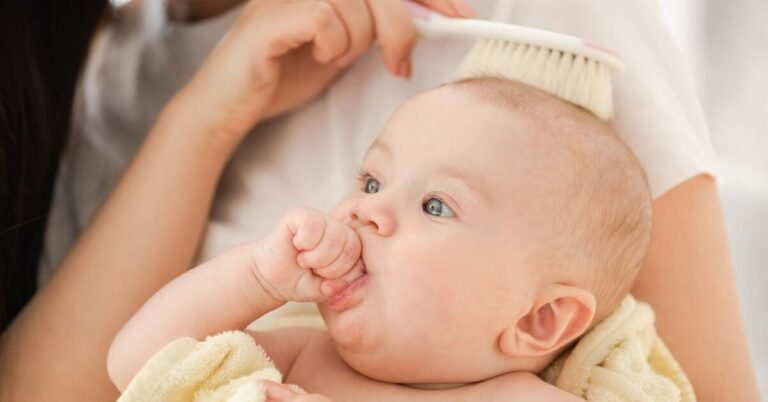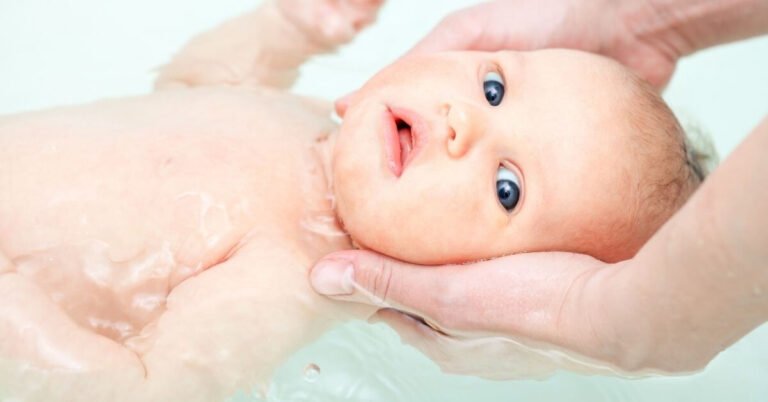9 Ways How to Treat Baby Eczema Every Parent Should Know About
Do you also think that treating baby eczema is an impossible job? Many parents find it hard to cope with the regular flare-ups and periods of remission typical for atopic dermatitis. If you like to learn more about how to treat baby eczema, we have got you covered.
Though there is no known cure for this condition, there are several treatment options available.
To successfully clear up baby eczema, you will need a personalized skincare plan that includes applying moisturizers and topical steroids and identifying and eliminating triggers.
You are curious about how to treat baby eczema so your child can finally find some relief.
Here are 9 strategies that will help to improve your baby’s skin condition.
AFFILIATE DISCLAIMER: SOME OF THE LINKS IN THIS POST ARE AFFILIATE LINKS. IF YOU USE THESE LINKS TO BUY SOMETHING, WE MAY EARN A COMMISSION. SEE FULL DISCLAIMER.
1. Avoid Triggers And Allergens
Many triggers in the environment can make baby eczema symptoms worse. If you can identify your baby’s triggers, you can then try to remove or avoid them. Tobacco smoke, dry air, pet dander, or pollen are frequent triggers and something you can easily keep your child away from.
Similarly, when the baby’s skin comes in contact with irritants from laundry detergent and fabric softeners, this may trigger a skin reaction. Only use fragrance and dye-free products. Moreover, certain materials/clothing like wool and polyester can worsen baby eczema.
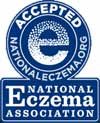
Most baby bathing products like shampoos and soaps contain harmful ingredients, fragrances, and chemicals. You can avoid this by only using hypoallergenic and fragrance-free baby soaps and shampoos. Preferably, this is a product with the National Eczema Association Seal of Acceptance. Of course, this also counts for cleansers, sunscreen, baby powder, and baby wipes.
Furthermore, your baby’s eczema can be food-related. Common triggers in a baby’s food are cow’s milk, eggs, wheat, fish, and dairy products. When you see that eczema flares up after the baby eats certain foods. Keeping a food diary can be very helpful in figuring out if your child has a food intolerance. Bear in mind that true food allergies may produce more severe symptoms such as vomiting, difficulty breathing, diarrhea, and swelling of the mouth and throat.
Additionally, bodily fluids such as sweat and saliva can cause baby eczema flare-ups. Sweat and overheating are well-known eczema triggers. You can prevent overheating and sweating by dressing the baby in these 100% cotton pajamas by Carter’s Baby and keeping the temperature in the nursery comfortable. Rather use layers of lightweight blankets that can be removed if needed than a heavy duvet cover.
2. Treating Baby Eczema With Emollients
Emollients keep the skin moist by creating an oily film over it. They help to break the cycle of continuous itching and scratching that damages the skin. By applying emollients, you will keep the skin supple and less likely to crack.
Once you restore the skin barrier, it will prevent the penetration of irritants, allergens, and bacteria. This will help reduce the use of topical steroids and the number of eczema outbreaks.
You can never use too many emollients so that you can apply them liberally to the affected skin. Emollients or moisturizers are available in thin lotions, creams, to thick ointments.
As a rule, the thicker and higher in lipids the emollients, the better and longer they work. Unfortunately, they are a lot messier as well.
What kind of emollient (moisturizer) is best for your baby depends on how severe the eczema is. Usually, for mild baby eczema, lotion or cream will do the job. But for wet or weeping eczema, you will get better results using thicker ointments with a longer-lasting effect because of their higher oil content.
For babies suffering from eczema-prone skin, we recommend the following products to help moisture, soothe and relieve minor irritations.
Eucerin Baby Eczema Relief Body Cream
California Baby Eczema Shampoo and Body Wash (Therapeutic Relief)
Aveeno Baby Eczema Therapy Nighttime Balm with Natural Colloidal Oatmeal for Eczema Relief
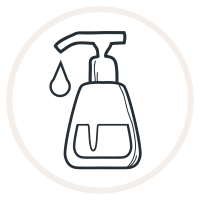
How to treat baby eczema using emollients?
- Bath the baby with emollients added to the bathwater.
- Use a gentle moisturizing soap without chemicals.
- Soak for 7 to 10 minutes max.
- Pat the skin dry with a towel (never rub).
- Apply emollient cream to the child’s skin.
- Also, apply moisturizing lotions or creams between baths or showers and before bedtime (preferably 3 to 4 times a day)
When trying a new emollient, it is recommended to test it first on a part of the baby’s skin that is eczema free.
3. How to Treat Baby Eczema With Topical Steroid Creams
Topical steroids are commonly used to treat rashes, eczema, and psoriasis. With eczema, steroid creams are mainly used to treat eczema flare-ups.
Use them only in a low dose for 3 to 7 days, and if there is no improvement, your doctor may prescribe a stronger steroid cream. Topical steroids also come in lotions, ointments, and creams and help reduce redness and swelling of the skin.
Beware of long-term use of steroids as this can lead to infections with fungus and bacteria but also to thinning of the skin.
HOW TO APPLY STEROID CREAM?
- Rub no more than a fingertip unit to the inflamed area.
- Softly massage the cream until completely absorbed.
- Wash your hands afterward.
- Follow the directions of your doctor regarding how many times a day you should apply the cream.
If you use a topical steroid cream together with emollients, you can apply either the emollient or the steroid first. It is important that you wait at least 20 minutes for it to get absorbed before you apply the second preparation.
4. Treating Eczema With Topical Immunomodulators
This steroid-free eczema cream works by suppressing certain cells (not the whole immune system) involving inflammation.
- Tacrolimus 1% or 0,03% ointment (Protopic)
- Pimecrolimus 1% cream (Elidel) Protopic and Elidel are usually prescribed if other eczema treatments have failed or if the child doesn’t respond adequately to treatment with topical steroids.
Protopic is often used for treating baby eczema areas like the face, eyelids, groin, and upper chest. Topical Immunomodulators (or topical calcineurin inhibitors) are only for a short time use because long-term safety effects are still being evaluated. They are also unsuitable for children below 2 years of age or those with an immune deficiency.
5. Baby Eczema Treatment With Phototherapy
When other treatments have failed, another option is ultraviolet light or phototherapy. How can phototherapy help?
UV radiation is known to suppress the immune system and prevent an overactive response that causes skin inflammation.
As with too much sun exposure, this therapy comes with several risks. The phototherapy may require several months to see improvement. The prolonged use of phototherapy increases the risk of sunburn, skin cancer, and premature aging.
For this therapy, the child must be at least 3 years of age. Of course, you will have to discuss with your dermatologist if treating baby eczema with phototherapy is suitable for your child.
6. How to Treat Baby Eczema With Wet Wraps
Wet wrap therapy is a way to hydrate and calm the dry and sensitive skin of children with atopic dermatitis.
Various studies show that most children benefit from treating baby eczema with wet wraps. About 74% of the children have reduced itching and sleep better.
Wet wrap therapy in a few simple steps.
- Prepare a lukewarm bath with emollients.
- After soaking in the bath, pat the skin carefully dry. Never rub the skin; it will irritate the skin.
- Moisturize and wrap the affected areas with wet bandages.
- Lock in the moisture by covering the wet bandages with dry ones or clothing.
- After removing the bandages, re-apply moisturizer.
- Do not use wet wraps on infected eczema!
Leave the bandages for a few hours or for as long as your child accepts them. Your child may want to remove the bandages, so this therapy requires a lot of patience. You can also cover the wet wraps with pajamas before bedtime. You may like to check out Soothems. They have specially designed eczema sleepwear you can use to cover the wet wrapping bandages.
7. Treating Baby Eczema With Anti-Itch Creams
Itching is definitely the worse part of eczema. It’s impossible to make a baby understand that continuous scratching aggravates eczema and may cause an infection. This is where topical and oral antihistamines may help if the itching is severe.
They often help to break the cycle of scratching eczema, which makes eczema worse. Some older types of antihistamines like Phenergan and Atarax make the brain drowsy and are primarily used at bedtime because they can help a baby get to sleep. Never use anti-itch creams on children younger than 2 before consulting your doctor first
8. Eczema Treatment Using Bleach Baths
Bleach baths for eczema are possibly beneficial for children with eczema, were the findings of a randomized controlled trial published in the journal Pediatrics.
Eczema skin is often damaged through constant scratching which makes it particularly susceptible to bacterial infections.
These infections usually make eczema worse. Bleach baths can be helpful by killing these bacteria and giving the skin a chance to heal.
In about 90% of children with eczema, staphylococcus aureus is found on the skin. Some strains of staphylococcus (MRSA and ORSA) are already resistant to certain antibiotics, which makes them difficult to treat.
Regular bleach baths may stop these antibiotic-resistant bacteria from developing and spreading to others. They may also reduce the use of antibiotics in children with difficulty controlling eczema.
Visit BleachBath.com to see how to treat baby eczema using bleach baths. But also, if you like to learn more about the latest research and information from the medical community about the benefits of bleach baths for a variety of skin conditions.
Recommended BabyEczema Creams
[amazon box =”B005UEB96K,B00WH31P7A,B01N2IORIQ,B01FLIWBN4″ star_rating=”none” reviews=”none” ]
9. Treating Eczema With Antibiotics
Secondary infections with bacteria like Staphylococcus Aureus can make the baby’s eczema much worse.
Infected eczema is usually treated with topical antibiotic ointments like Bactroban or Fucidin. Dermol 500 Lotion is an antimicrobial emollient and moisturizer used to care for dry and pruritic (itchy) skin conditions like eczema and dermatitis and for use as a soap substitute.
However, if the infection is more severe, your child feels unwell, or has a fever, a course of oral antibiotics is usually necessary to clear the infection. All creams and ointments used during the infection are likely contaminated with bacteria. In this case, buying moisturizers with a pump is the best way to avoid contamination.

